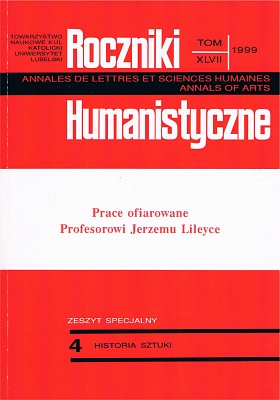King Stanisław August's „Garnitur nieszczęśliwości” („Snit of Unhappiness”)
Abstract
On 3 November 1771 in Warsaw the Bar confederates made an attempt against Stanisław August Poniatowski's liberty in order to force him to proclaim himself against Russia. Jan Kuźma called Kosiński, who was the leader of a small party of conspirators, kidnapped the King. The escort of the King's carriage was defeated; one of the haiduks, Jerzy Henryk Butzow, died from the bullets, and another one, Szymon Mikulski, was wounded with a sabre. A bullet pierced the King's fur coat, and during the kidnapping he lost his shoe. Kuźma offered the captive his own boot with a spur, but ultimately, remorseful, having been promised remission of his guilt, he freed the monarch on the following day. Stanisław August who was certain that he had been saved by miracle, kept all the relics of the event: his own garment, called “suit of unhappiness”, Kuźma's boot, Mikulski's hat cut with the sabre, and even the bullets taken out of Butzow's body. After his abdication he took them to St Petersburg. After the King's death the relics were inherited by Prince Józef Poniatowski, and finally, in 1815, they were given to Świątynia Sybilli (Sybil's Temple) in Puławy, the first Polish historical museum established by Princess Izabela Czartoryska. Of these objects the royal shirt and stocking, Kuźma's boot and Mikulski's hat have been preserved in today's Muzeum Czartoryskich (the Czartoryskis' Museum) in Cracow. The hat was used by Jan Matejko as a model for his painting “Konstytucja 3 Maja” (“The Constitution of 3rd May”) that is now exhibited in the Royal Castle in Warsaw.
Copyright (c) 1999 Roczniki Humanistyczne

This work is licensed under a Creative Commons Attribution-NonCommercial-NoDerivatives 4.0 International License.





